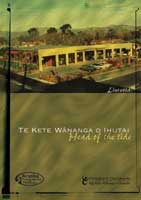Library Names: the Stories of the Bilingual Names for Christchurch City Libraries

Formerly, the Kaiapoi Ngāi Tahu were the owners of Ihutai, an important fishing easement located in the New Brighton - Sumner coastline area. It was part of a much larger fishery or mahinga kai used by a number of specially designated hapū and whānau groups. The owners of these traditional sites were those of the Kaiapoi Reserve and their immediate descendants.
The boundary of Ihutai was bounded by the shores of the Ōtākaro (Avon) and Ōpāwaho (Heathcote) rivers including the central railway station and to a point approximately known as Avonside Girls High School, across to the Cashmere Hills and then to Pukekai Kahu (Castle Hill). This also included all of the Heathcote Valley to the summit of Te Heru o Kahukura.
Different whānau - families within the Ihutai area were highly specialised at seeding the coastline with shellfish grown in poha or kelp bags sunk into the sand, experts at making matau - fishhooks and large kupenga - nets. They were also considered the guardians and protectors of the trails through the dangerous swamps of present day Christchurch that depended on a combination of trading and a system of giving koha or gifts according to the various skills and functions of these families
It appears the name 'Linwood' comes from Joseph Brittan's 1805-1867 (surgeon) residence in Dorset, England who came out to New Zealand in 1852. He was a newspaper editor and Provincial Councillor and brother to the well-known settler William Brittan. Linwood attracted the attention from early settlers mainly because so many of them liked the look of the land as they came up the Avon River towards Christchurch upon first arrival and considered it prime real estate in which to settle on.
